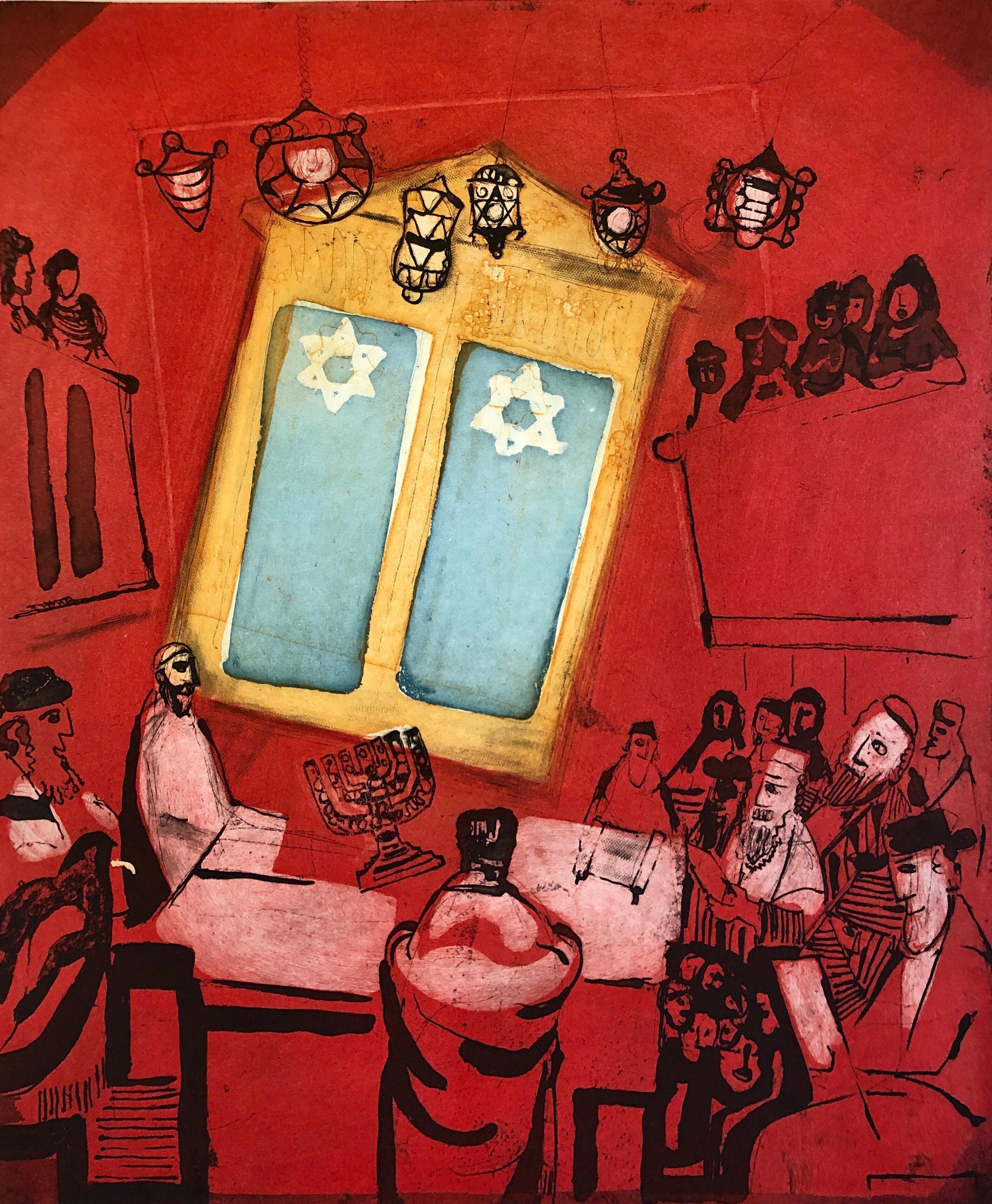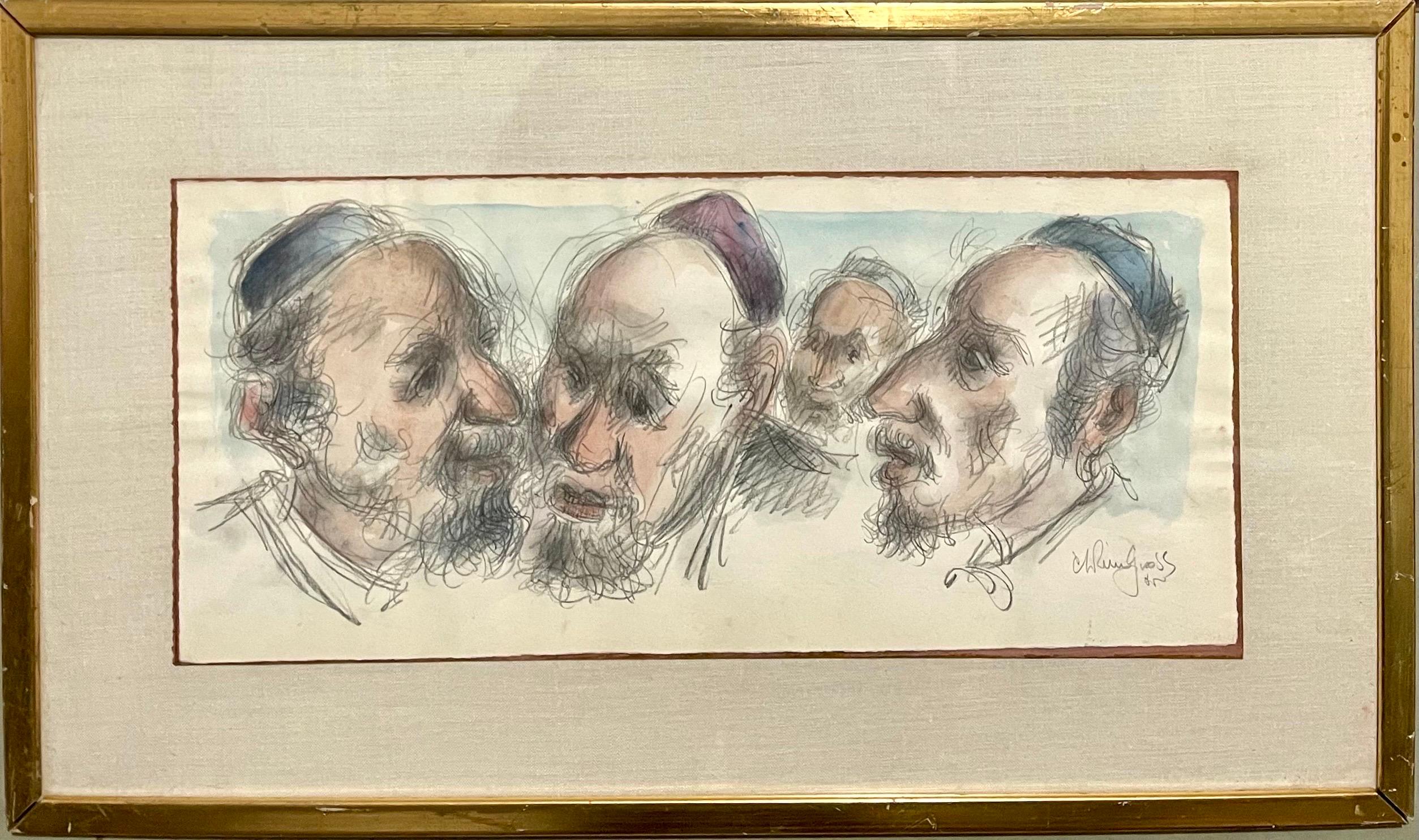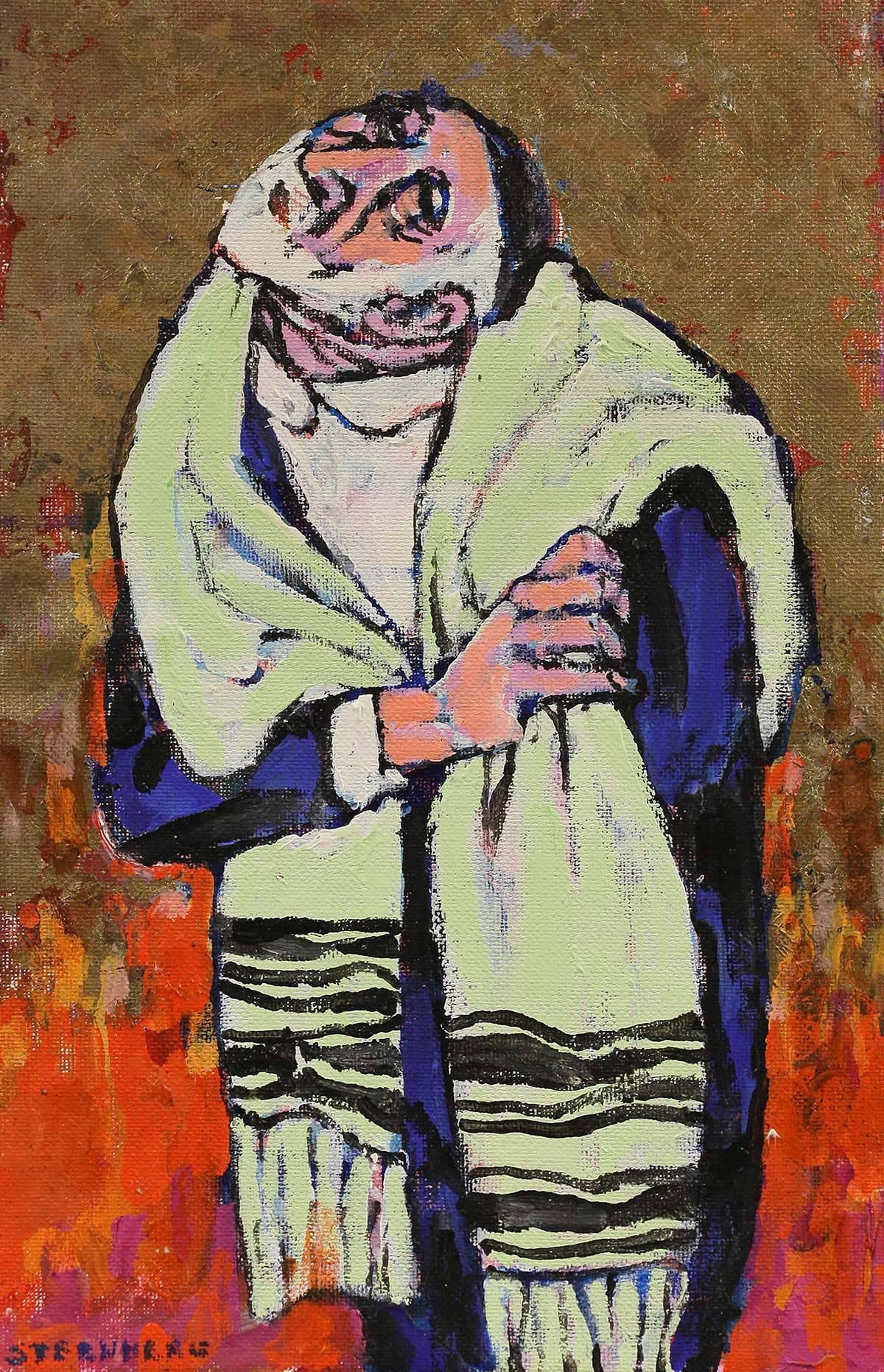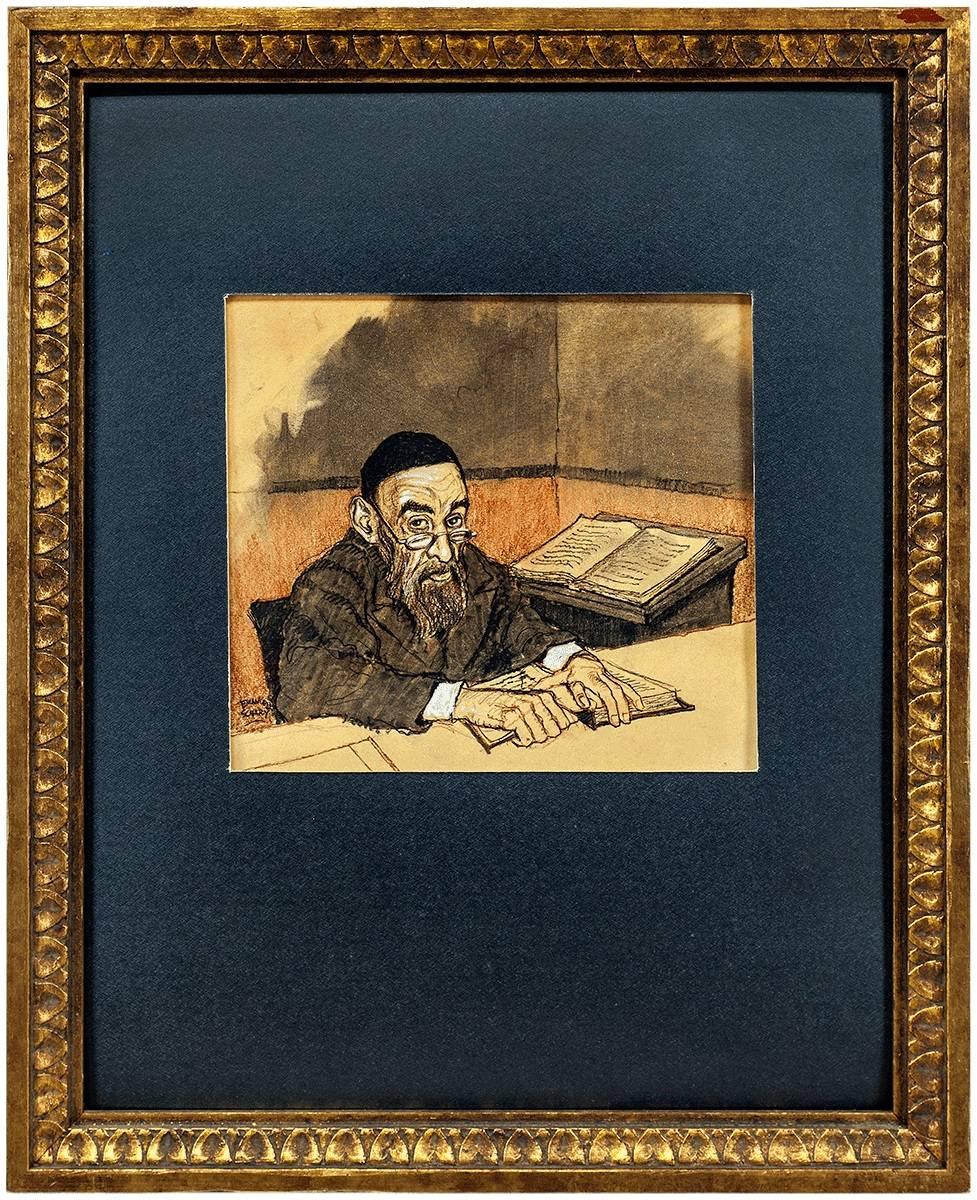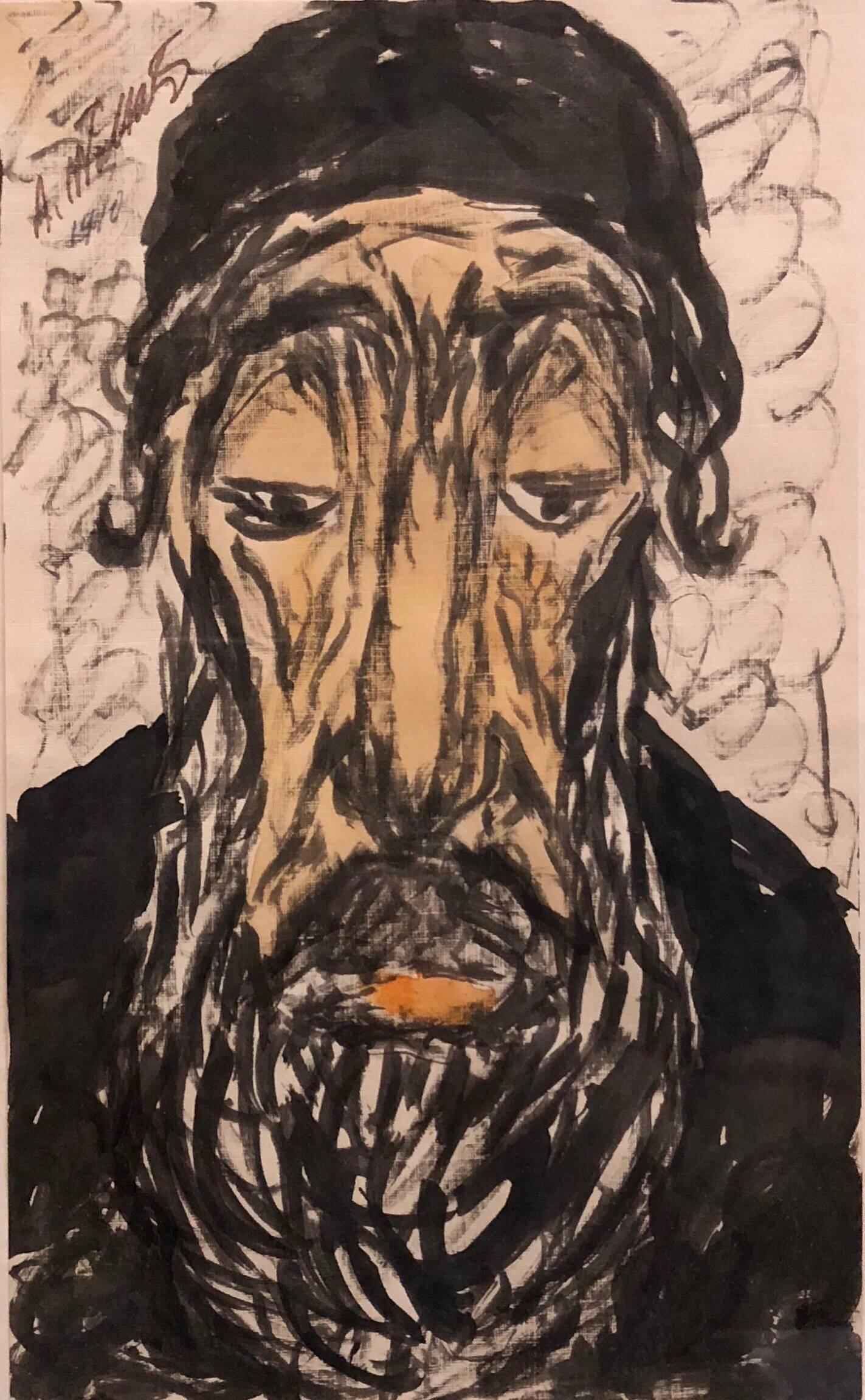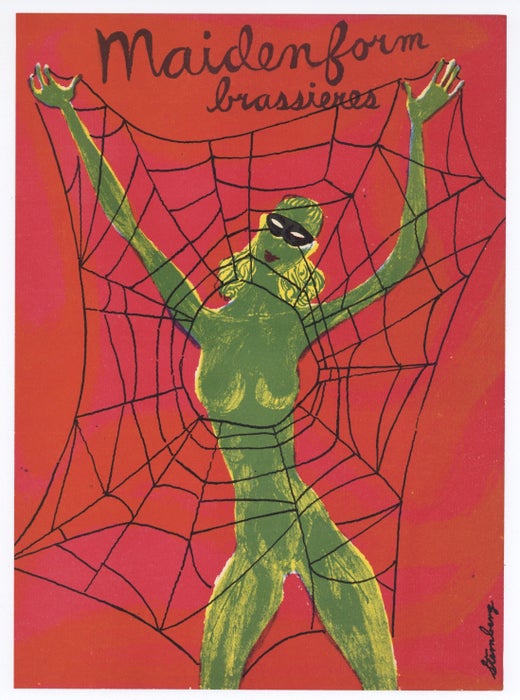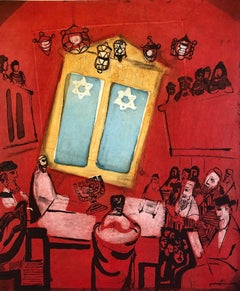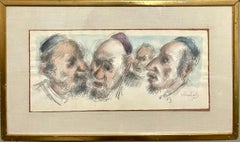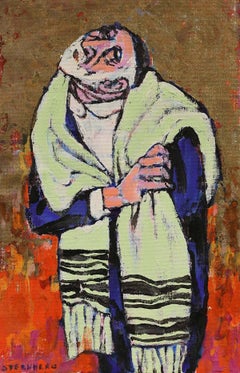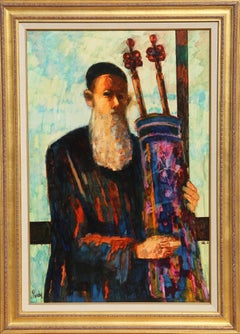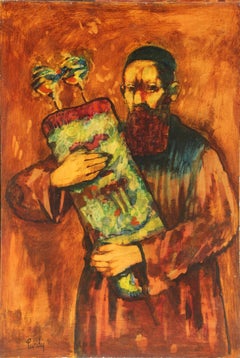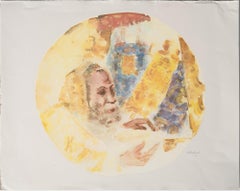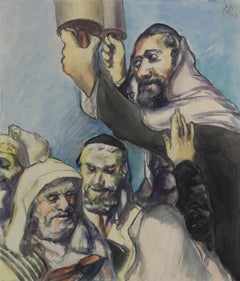Harry SternbergModernist Rabbi In Synagogue Judaica Watercolor Harry Sternberg
About the Item
- Creator:Harry Sternberg (1904-2002, American)
- Dimensions:Height: 20 in (50.8 cm)Width: 15 in (38.1 cm)
- Medium:
- Movement & Style:
- Period:
- Condition:Minor edge wear. Very small tear on upper right corner. Please see photos.
- Gallery Location:Surfside, FL
- Reference Number:1stDibs: LU38215359752
Harry Sternberg
Harry Sternberg was an American painter, printmaker, muralist, lithographer and educator. He was born in New York City on July 19, 1904. He studied at the Art Students League of New York, graphics with Harry Wickey. During the Depression, he was a Works Progress Administration artist and his murals are in post offices in Chicago as well as Chester and Sellersville, Pennsylvania. In 1936, Sternberg was awarded a Guggenheim Fellowship for creating a series of drawings, prints and paintings showing the principal American Industrial and agricultural occupations. He confined his investigations to the coal and steel industries of eastern Pennsylvania, immersing himself for several months in the lives of the coal miners in Mahanoy City. When he returned to New York, he made a series of 11 prints that emphasized the bleak lives and dangerous work of the miners. Sternberg wished to point out the dangers of working in the mines, the diseases caused by the inhalation of coal dust, mine collapses and maiming dynamite accidents that would result in such mutilations. From 1934–68, he taught painting and graphics at the Art Students League of New York, from 1942–45, graphics at the New School for Social Research and 1959–69, he was the head of the Art Department in the Idyllwild School of Music and Art at the University of Southern California. He wrote several books on graphics including silk screening, etching and woodcutting. Sternberg died on November 27, 2001, in Escondido, California.
- ShippingRetrieving quote...Shipping from: Surfside, FL
- Return Policy
More From This Seller
View All20th Century Modern Figurative Prints
Etching, Aquatint
Mid-20th Century American Modern Figurative Drawings and Watercolors
Paper, Watercolor
20th Century Modern Figurative Paintings
Acrylic, Illustration Board
20th Century Modern Figurative Drawings and Watercolors
Pastel, Mixed Media, Tempera, Watercolor
Mid-20th Century Modern Mixed Media
Ink, Mixed Media, Watercolor
Early 20th Century Modern Figurative Drawings and Watercolors
Paper, Watercolor
You May Also Like
1970s Modern Figurative Paintings
Masonite, Oil
1960s Post-War Figurative Paintings
Masonite, Oil
20th Century Modern Portrait Prints
Lithograph
1940s Figurative Drawings and Watercolors
Paper, Watercolor
Late 20th Century Contemporary Figurative Prints
Foil
1950s Post-War Portrait Paintings
Canvas, Oil
